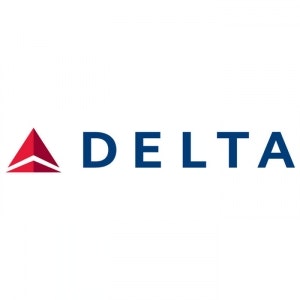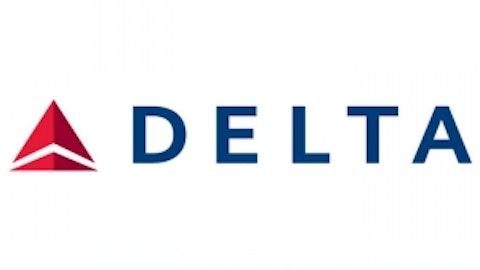The FIFA Confederations cup has ended in Brazil. However, the tournament was a preparation to make sure every detail is polished for the World Cup next year. I see the World Cup as an investing opportunity, and airlines that have exposure to the Brazilian market may be a good way to profit from the massive event.
Two airlines with increasing exposure to Brazil
Delta Air Lines, Inc. (NYSE:DAL) and US Airways Group, Inc. (NYSE:LCC) are inaugurating new routes to Brazil.
From the valuation point of view, Delta Air Lines, Inc. (NYSE:DAL) trades with a Price-to-Earnings ratio of 17.9, and US Airways Group, Inc. (NYSE:LCC) trades with a P/E of 5.3. Both airlines trade well below the industry’s average of 30.7.
Delta Air Lines, Inc. (NYSE:DAL) was tentatively awarded permission from the U.S. Department of Transportation to increase its service to Brazil with an additional daily nonstop flight between Atlanta and Sao Paulo.
Also, the company has formed a codeshare partnership with Gol Linhas Aereas Inteligentes SA (ADR) (NYSE:GOL). The implementation will begin with the Atlanta–Brasilia flight. Also, Gol Linhas Aereas Inteligentes SA (ADR) (NYSE:GOL) will sell international tickets through its sales website www.voegol.com. The company expects to meet 99% of Brazilian and United States demand between the countries.
Further, the company expects to phase in all Delta operated flights between Brazil and the United States, including Atlanta, New York John F. Kennedy International Airport, and Detroit.
The exposure of Delta Air Lines, Inc. (NYSE:DAL) to the Brazilian market may increase its revenue with the coming World Cup next year. We must take into account that the economic condition in the United States has been slowly but firmly improving, and the consumer confident index is at five-year high levels. Hence, investors may expect the passenger traffic between the United States and Brazil to rise significantly next year.
Lastly, the carrier has inaugurated a $1.4 billion terminal at the JFK International Airport. The strategy should help the carrier increase its international exposure.
From a performance point of view, the company posted increasing revenue passenger miles (RPM) in May on a year-over-year basis. RPM increased 1.4%, greatly helped by a 10.5% increase in RPM for its Latin America section. To meet increasing passenger traffic, the company added 0.7% more available seat miles (ASM). Its load factor increased by 0.7% to 84.8%.
Overall, Delta Air Lines, Inc. (NYSE:DAL) has increased its presence in the Brazilian market through a partnership with Gol Linhas Aereas Inteligentes SA (ADR) (NYSE:GOL). Also, the inauguration of the new terminal at the JFK International Airport should increase its presence worldwide.
US Airways Group, Inc. (NYSE:LCC) is not lagging in the race to grab Brazilian market share. The company applied to the U.S. DOT for rights to operate daily nonstop flights from Charlotte, NC, and Philadelphia, PA, to Sao Paulo. Flights from Charlotte, NC, have been tentatively approved, and they started on June 8 using temporary frequencies leased from another carrier.
With this move, the carrier now offers a one-stop flight from 38 cities in the United States to Sao Paulo. Once the route Philadelphia-Sao Paulo is approved, the carrier will offer a one-stop flight from 68 cities in the U.S. to Sao Paulo.
US Airways Group, Inc. (NYSE:LCC) is working towards international expansion. The merger with American Airlines will position the carrier as the largest international airline in the world. The carrier and AMR (American Airlines’ parent company) have elected the board of directors for the new American Airlines. The acquisition of American Airlines should give consolidation to US Airways Group, Inc. (NYSE:LCC) in international markets.
Apart from expansion in international markets, the company is reducing its costs of operation by replacing its The Boeing Company (NYSE:BA) fleet with the more fuel-efficient Airbus aircraft. The B737-400 will be replaced by A321s, and they are set to retire between 2012 and 2014. The B757-200 aircraft will be phased out between 2016 and 2020. Finally, the B767 will be retired in 2017 and will be replaced by A330-200.
So far, the company has shown expansion and reduction operational costs strategies. But what about the passenger traffic?
The company posted a record load factor in May. Its overall revenue passenger miles increased 5.9%, led by an 8.4% increase in its Atlantic RPM division. The company increased its available seat miles by 3.9% to meet strong passenger traffic. Consequently, its load factor rose 1.7% to 85.8%.
In conclusion, US Airways Group, Inc. (NYSE:LCC) is expanding to Brazil, which is what we want to take advantage of the World Cup. Costs of operation are being reduced by the replacement of old The Boeing Company (NYSE:BA) aircraft with more fuel-efficient Airbus aircraft. Lastly, the passenger traffic continues to gain strength.
The other major airline
United Continental Holdings Inc (NYSE:UAL) is another major player in the airline industry. The company trades with a negative P/E. According to its most recent earnings report, its revenue rose 1% to $8.72 billion. Its net loss shrunk from $448 million to $417 million. Also, its cash from operations increased $200 million to $393 million. Overall, the company had a better quarter compared to last year’s.
Going back to the topic of our discussion, the carrier also has flights to Sao Paulo and Rio de Janeiro from several destinations in the United States, including the Houston Intercontinental Airport and the Washington Dulles Airport. The passenger traffic to Brazil for the World Cup should increase for United Continental Holdings Inc (NYSE:UAL).
The company is showing signs of growth. Recently, the company expanded the order of The Boeing Company (NYSE:BA) 787s “Dreamliner” to 65 aircraft. The company currently operates six of them. Further, the company will convert 10 B787 aircraft to B787-10, a stretched version of the original aircraft. The carrier will cut costs of operation by this transaction because, apparently, the B787-10 offers the best fuel consumption rate per seat in the aircraft. In this fashion, the company will be able to replace old aircraft with this more fuel-efficient aircraft.
Overall, the company has a large exposure to the Brazilian market, and it presents an attractive investment option to profit from the event.
The Foolish conclusion
The World Cup means money, and investors should take advantage of it. By investing in airlines with exposure to the Brazilian market, investors should benefit from an event that occurs every four years. These companies have appealing valuation metrics. Also, they are expanding operations by establishing new routes, unveiling new terminals, or acquiring new aircraft. For these reasons, investors should consider these stocks to profit from the World Cup.
Robinson Roacho has no position in any stocks mentioned. The Motley Fool has no position in any of the stocks mentioned.
The article Profit From the Soccer World Cup With These Stocks originally appeared on Fool.com.
Robinson is a member of The Motley Fool Blog Network — entries represent the personal opinion of the blogger and are not formally edited.
Copyright © 1995 – 2013 The Motley Fool, LLC. All rights reserved. The Motley Fool has a disclosure policy.




